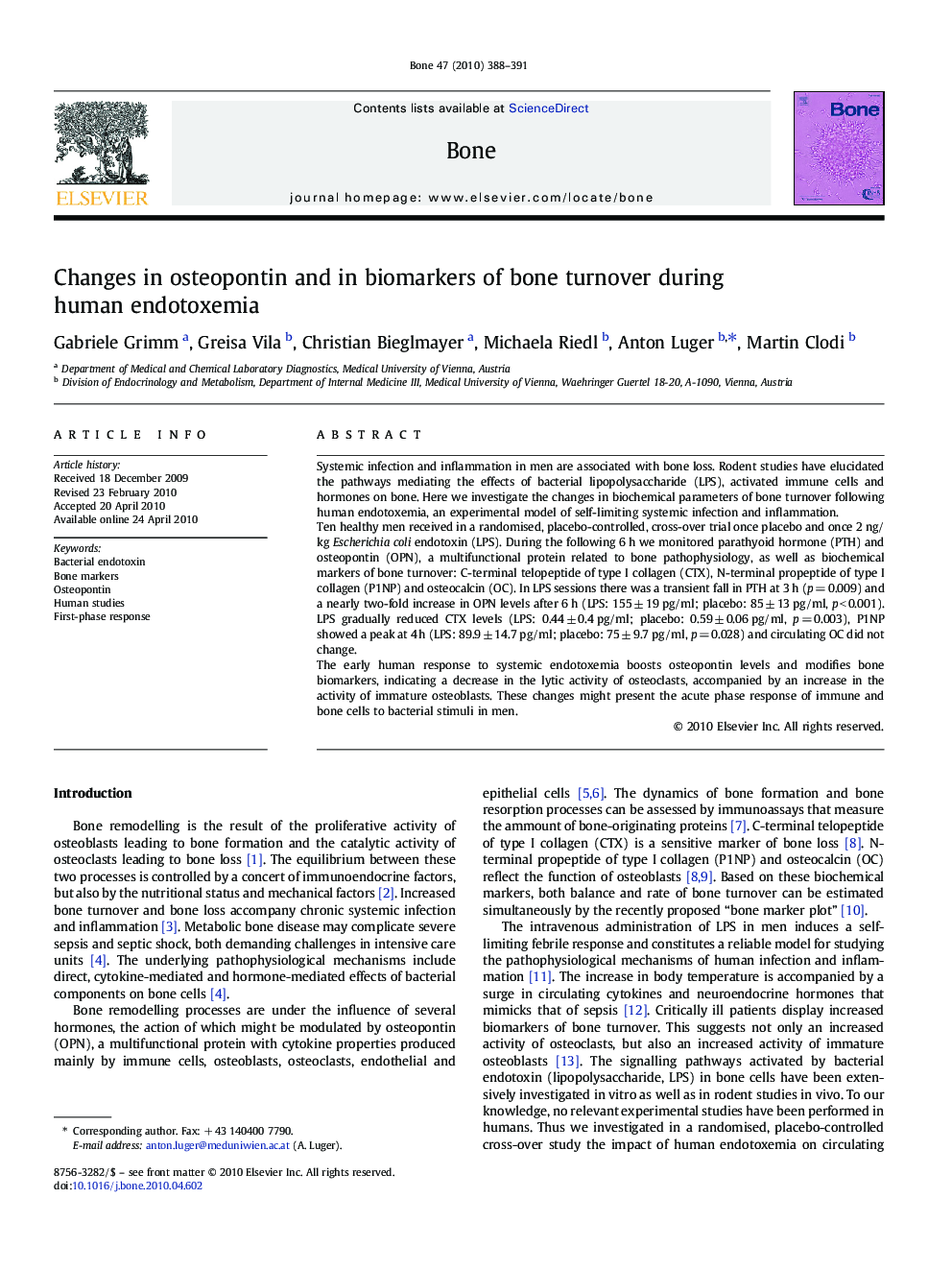| Article ID | Journal | Published Year | Pages | File Type |
|---|---|---|---|---|
| 2780668 | Bone | 2010 | 4 Pages |
Systemic infection and inflammation in men are associated with bone loss. Rodent studies have elucidated the pathways mediating the effects of bacterial lipopolysaccharide (LPS), activated immune cells and hormones on bone. Here we investigate the changes in biochemical parameters of bone turnover following human endotoxemia, an experimental model of self-limiting systemic infection and inflammation.Ten healthy men received in a randomised, placebo-controlled, cross-over trial once placebo and once 2 ng/kg Escherichia coli endotoxin (LPS). During the following 6 h we monitored parathyoid hormone (PTH) and osteopontin (OPN), a multifunctional protein related to bone pathophysiology, as well as biochemical markers of bone turnover: C-terminal telopeptide of type I collagen (CTX), N-terminal propeptide of type I collagen (P1NP) and osteocalcin (OC). In LPS sessions there was a transient fall in PTH at 3 h (p = 0.009) and a nearly two-fold increase in OPN levels after 6 h (LPS: 155 ± 19 pg/ml; placebo: 85 ± 13 pg/ml, p < 0.001). LPS gradually reduced CTX levels (LPS: 0.44 ± 0.4 pg/ml; placebo: 0.59 ± 0.06 pg/ml, p = 0.003), P1NP showed a peak at 4 h (LPS: 89.9 ± 14.7 pg/ml; placebo: 75 ± 9.7 pg/ml, p = 0.028) and circulating OC did not change.The early human response to systemic endotoxemia boosts osteopontin levels and modifies bone biomarkers, indicating a decrease in the lytic activity of osteoclasts, accompanied by an increase in the activity of immature osteoblasts. These changes might present the acute phase response of immune and bone cells to bacterial stimuli in men.
